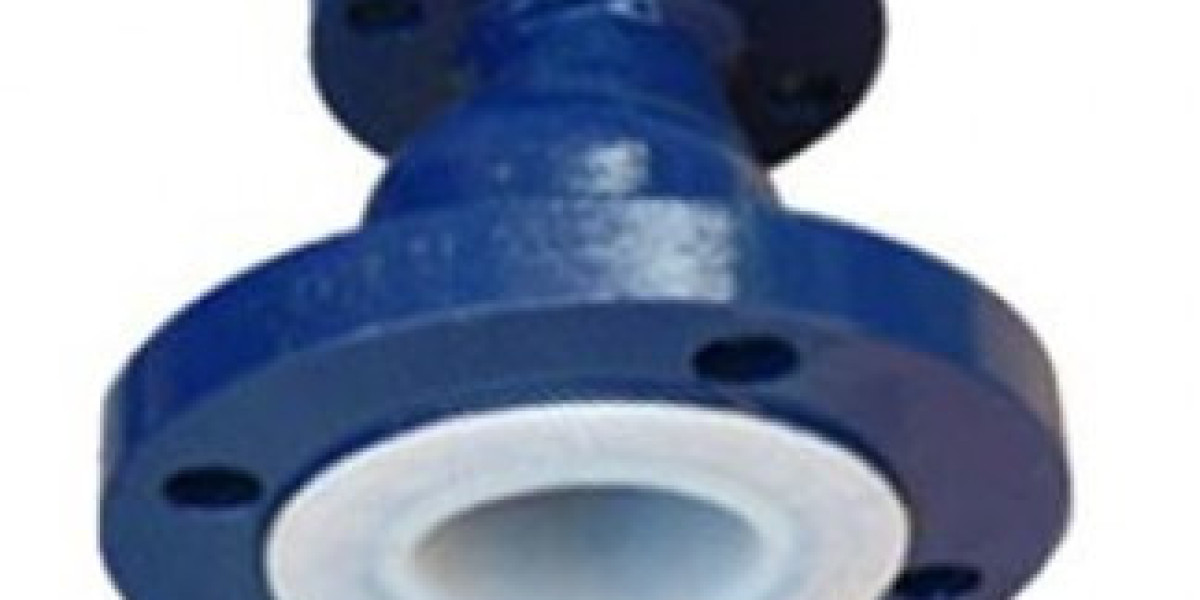When industries transport aggressive chemicals, acids, or solvents, one of the biggest concerns is corrosion. Traditional flanges made of steel or alloy often fail when exposed to highly reactive substances. This is where PTFE lined flanges prove to be an ideal solution. By combining the durability of a metal flange with the chemical resistance of PTFE (Polytetrafluoroethylene), these flanges ensure leak-proof and long-lasting performance in demanding environments.
In this blog, we will explore PTFE lined flanges in detail – from their construction and benefits to applications across various industries.
What is a PTFE Lined Flange?
A PTFE lined flange is a standard flange made of carbon steel or stainless steel, coated internally with a layer of PTFE. The lining acts as a barrier, preventing the process fluid from coming into contact with the metal surface. This design eliminates the risk of corrosion and increases service life.
PTFE is widely known for its non-reactive and non-stick properties. It does not react with most chemicals, making it perfect for industries that deal with corrosive fluids.
Why Use PTFE Lined Flanges?
The main reason industries prefer PTFE lined flanges is their ability to handle extreme conditions. Whether it’s an acidic environment, high temperatures, or abrasive materials, these flanges ensure reliable operation.
Key Benefits:
High resistance to corrosion and chemical attack.
Strong mechanical support due to steel reinforcement.
Smooth internal surface reduces fluid friction.
Longer lifespan compared to unlined flanges.
Low maintenance requirements.
Types of PTFE Lined Flanges
PTFE lined flanges are available in multiple configurations to suit different industrial needs:
Slip-On Flange – Simple installation, ideal for low-pressure systems.
Weld Neck Flange – Suitable for high-pressure, high-temperature applications.
Blind Flange – Used to close pipe ends or isolate sections during maintenance.
Lap Joint Flange – Provides flexibility and is cost-effective for frequent dismantling.
Threaded Flange – Allows assembly without welding, useful for small-diameter pipes.
Each type of flange offers a unique advantage depending on the piping system’s requirement.
Manufacturing of PTFE Lined Flanges
The production process involves a blend of metal forging and polymer technology.
Flange Preparation – A steel or alloy flange is forged and machined.
Surface Treatment – The inner bore is cleaned and prepared for lining.
PTFE Lining Application – PTFE is molded, extruded, or pressed inside the bore.
Curing – The flange undergoes heat treatment for stability.
Quality Testing – Pressure tests and vacuum tests confirm performance.
This ensures that the flange is strong outside but resistant to corrosion inside.
Properties of PTFE Lined Flanges
Chemical Inertness: Resistant to almost all chemicals.
Temperature Tolerance: Can perform from -40°C to +200°C.
Non-Stick Surface: Prevents build-up of residues inside the pipe.
Low Permeability: Fluids cannot penetrate the lining.
Durability: Extends the service life of piping systems.
Advantages Over Conventional Flanges
When compared to traditional unlined flanges, PTFE lined flanges clearly stand out:
Higher safety – Prevents leakage of hazardous fluids.
Cost-efficient – Reduces downtime and replacement costs.
Wide compatibility – Suitable for almost all industrial chemicals.
Compliance – Manufactured as per ASME, ANSI, DIN, and ISO standards.
Applications of PTFE Lined Flanges
PTFE lined flanges find use in multiple industries:
Chemical Industry
Safe handling of corrosive acids and solvents.
Used in reactors, storage tanks, and process pipelines.
Pharmaceutical Industry
Prevents contamination of sensitive formulations.
Maintains purity during drug production.
Food and Beverage
PTFE lining is food-safe and non-toxic.
Used in systems carrying juices, oils, and dairy products.
Water Treatment Plants
Withstands chlorine and disinfectants.
Ensures long-lasting performance in pipelines.
Petrochemical and Oil & Gas
Suitable for harsh environments in refineries and offshore platforms.
Mining Industry
Used in transporting mineral slurries and acidic solutions.
Installation of PTFE Lined Flanges
To ensure efficiency and durability, follow these installation tips:
Align the flanges properly before tightening.
Use torque values recommended by the manufacturer.
Avoid overtightening, as it can damage the PTFE lining.
Always use the correct type of gasket.
Inspect the lining before and after installation.
Maintenance Practices
Regularly inspect for cracks or lining wear.
Replace damaged flanges promptly.
Keep flanges clean and dry during storage.
Protect from mechanical impact during handling.
With proper care, PTFE lined flanges can operate for many years without failure.
PTFE Lined Flange vs. Other Lining Materials
| Property | PTFE Lining | Rubber Lining | Glass Lining |
|---|---|---|---|
| Chemical Resistance | Excellent | Limited | Good but brittle |
| Temperature Range | Wide (-40°C to 200°C) | Moderate | Limited |
| Mechanical Strength | Strong (with steel base) | Medium | Brittle under stress |
| Service Life | Long | Medium | Medium |
PTFE clearly offers a superior balance of durability and chemical resistance.
Standards and Specifications
PTFE lined flanges are manufactured as per global norms:
ASME B16.5 – Steel pipe flanges.
DIN EN 1092-1 – European flange standard.
ANSI / ASTM – Material and testing standards.
ISO 5752 – Dimensions of pipe flanges.
Following these ensures quality, interchangeability, and safety.
Global Demand and Market Trends
The global market for PTFE lined flanges is growing steadily. Industries are increasingly focusing on safe, long-lasting, and low-maintenance solutions. With advancements in PTFE processing, these flanges are becoming more affordable and efficient, further boosting their adoption.
Conclusion
PTFE lined flanges are indispensable for industries that handle aggressive and hazardous fluids. They combine the structural strength of steel with the unmatched chemical resistance of PTFE, ensuring reliability, safety, and cost efficiency.
From chemical and pharmaceutical plants to food processing and water treatment facilities, PTFE lined flanges deliver consistent performance and extend the life of piping systems. For businesses looking for long-term solutions, PTFE lined flanges are a smart and future-proof choice.













